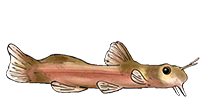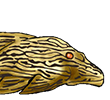Newbie needs lots of help/suggestions
Newbie needs lots of help/suggestions
I'm a grade 5 teacher, and my class and I are wanting a classroom pet; we'd like to find out more about keeping a catfish aquarium. Several of my students are avid fishermen and they'd like to know if we could set up a tank with local species (blues, channels, flatheads).
Before you get the wrong idea, no, we're not going to eat them!
I just wanted to know if I can buy N. American species such as those listed above at local shops, or if I'd need to go with other non-local species. We have a decent amount of space in our classroom for this, and I already have plenty of volunteers to help with feeding, cleaning, etc.
Any advice is greatly appreciated.
Have a great weekend,
Mr. Brown & Class
Before you get the wrong idea, no, we're not going to eat them!
I just wanted to know if I can buy N. American species such as those listed above at local shops, or if I'd need to go with other non-local species. We have a decent amount of space in our classroom for this, and I already have plenty of volunteers to help with feeding, cleaning, etc.
Any advice is greatly appreciated.
Have a great weekend,
Mr. Brown & Class
- MatsP
- Posts: 21038
- Joined: 06 Oct 2004, 13:58
- My articles: 4
- My images: 28
- My cats species list: 117 (i:33, k:0)
- My aquaria list: 10 (i:8)
- My BLogs: 4 (i:0, p:164)
- Spotted: 187
- Location 1: North of Cambridge
- Location 2: England.
The fish you suggest tend to grow very large. The size of tank that requires probably outstrip the entire schools budget, unless you DO plan on eating the fish when it reaches an unsuitable size for the tank.
I'd recommend that you look at for example Bullhead catfish of the genus . These are generally smaller than the ones you have suggested, and more suitable for keeping in a tank of reasonable dimensions.
--
Mats
I'd recommend that you look at for example Bullhead catfish of the genus . These are generally smaller than the ones you have suggested, and more suitable for keeping in a tank of reasonable dimensions.
--
Mats
Thank you, Mats, for the quick reply. My students were amazed to hear from someone in England. We'll look into the bullhead. Have a great day.MatsP wrote:The fish you suggest tend to grow very large. The size of tank that requires probably outstrip the entire schools budget, unless you DO plan on eating the fish when it reaches an unsuitable size for the tank.
I'd recommend that you look at for example Bullhead catfish of the genus . These are generally smaller than the ones you have suggested, and more suitable for keeping in a tank of reasonable dimensions.
--
Mats
- MatsP
- Posts: 21038
- Joined: 06 Oct 2004, 13:58
- My articles: 4
- My images: 28
- My cats species list: 117 (i:33, k:0)
- My aquaria list: 10 (i:8)
- My BLogs: 4 (i:0, p:164)
- Spotted: 187
- Location 1: North of Cambridge
- Location 2: England.
This forum is definitely international, and the split between North America and Europe is pretty even, giving about 80% of the forum members (of the 700 members who have entered the poll for "Where in the world are you from"). The remaining 20% is well spread between Africa, South America, Asia and Australia/New Zealand.
See this post:
http://www.planetcatfish.com/forum/viewtopic.php?t=446
--
Mats
See this post:
http://www.planetcatfish.com/forum/viewtopic.php?t=446
--
Mats
-
Bas Pels
- Posts: 2920
- Joined: 21 Dec 2006, 20:35
- My images: 1
- My cats species list: 28 (i:0, k:0)
- Spotted: 8
- Location 1: the Netherlands
- Location 2: Nijmegen the Netherlands
- Interests: Central American and Uruguayan fishes
One mayor problem with keeping local fishes is that they require - in winter - local outdoor temperatures which will be fairly low
In summer, though they are also quite sensible to high temperatures. Remember, in summer the water is always quite cool, but a tank in class will reach 30 degrees (Centigrade) easily.
Personally I live at 53 degrees North, and I keep fishes from Uruguay (30 - 35 degrees South) indoors. I only manage to keep the temperatures acceptable for them by keeping my window open al year round, mind you we have a temperate, sea climate, it never freeses below -20 C.
Therefore I would suggest to look for a fish from southern USA - from Florida or Texas
In summer, though they are also quite sensible to high temperatures. Remember, in summer the water is always quite cool, but a tank in class will reach 30 degrees (Centigrade) easily.
Personally I live at 53 degrees North, and I keep fishes from Uruguay (30 - 35 degrees South) indoors. I only manage to keep the temperatures acceptable for them by keeping my window open al year round, mind you we have a temperate, sea climate, it never freeses below -20 C.
Therefore I would suggest to look for a fish from southern USA - from Florida or Texas
- apistomaster
- Posts: 4735
- Joined: 10 Jun 2006, 14:26
- I've donated: $90.00!
- My articles: 1
- My cats species list: 12 (i:0, k:0)
- My Wishlist: 1
- Location 1: Clarkston, WA, USA
- Location 2: Clarkston, WA, USA
- Interests: Aquaculture and flyfishing
I have been able to keep bullhead catfish year around indoors in an unheated aquarium. They are anything but demanding. Ours were introduced to the Columbia River System in the Pacific Northwest USA incidental to 1890's introduction of Channel Catfish and Small Mouth Bass. Flathead Catfish were also mixed in with those original plants. They quickly spread and are now present in almost every body of water in the PNW except alpine lakes and recent rough fish eradications using rotenone in trout only lakes. They are non-native and not regarded as highly by PNW fisherman as they are in their native range. We have bigger fish to fry, so to speak.
They do eventually grow large but they would make good classroom aquarium subjects if kept with other cool water fish too large for the Bullheads to eat. They grow fast but not so fast they can't be kept for a year or so in a 20 gallon long, 12X12X30 inch tank with a good filter. A larger tank is better, mainly so there is enough room to keep some sunfish and a crayfish or two. A male Pumpkinseed Sunfish in breeding colors can give even a discus a run for their money. A really pretty fish. If the kids can catch a baby Painted Turtle(Their common name, not literally painted)it makes an even more interesting display.
The turtle just needs a piece of floating driftwood to bask on once in awhile.
All these animals will eat Cichlid pellets food, frozen brine shrimp, Frozen blood worms and live earthworms.
They do eventually grow large but they would make good classroom aquarium subjects if kept with other cool water fish too large for the Bullheads to eat. They grow fast but not so fast they can't be kept for a year or so in a 20 gallon long, 12X12X30 inch tank with a good filter. A larger tank is better, mainly so there is enough room to keep some sunfish and a crayfish or two. A male Pumpkinseed Sunfish in breeding colors can give even a discus a run for their money. A really pretty fish. If the kids can catch a baby Painted Turtle(Their common name, not literally painted)it makes an even more interesting display.
The turtle just needs a piece of floating driftwood to bask on once in awhile.
All these animals will eat Cichlid pellets food, frozen brine shrimp, Frozen blood worms and live earthworms.
Avid Trout fly fisherman. ·´¯`·...¸><)))º>
Thanks for the advice - I guess my next step is to head to a local shop to see what is available in the way of bullheads.apistomaster wrote:I have been able to keep bullhead catfish year around indoors in an unheated aquarium. They are anything but demanding. Ours were introduced to the Columbia River System in the Pacific Northwest USA incidental to 1890's introduction of Channel Catfish and Small Mouth Bass. Flathead Catfish were also mixed in with those original plants. They quickly spread and are now present in almost every body of water in the PNW except alpine lakes and recent rough fish eradications using rotenone in trout only lakes. They are non-native and not regarded as highly by PNW fisherman as they are in their native range. We have bigger fish to fry, so to speak.
They do eventually grow large but they would make good classroom aquarium subjects if kept with other cool water fish too large for the Bullheads to eat. They grow fast but not so fast they can't be kept for a year or so in a 20 gallon long, 12X12X30 inch tank with a good filter. A larger tank is better, mainly so there is enough room to keep some sunfish and a crayfish or two. A male Pumpkinseed Sunfish in breeding colors can give even a discus a run for their money. A really pretty fish. If the kids can catch a baby Painted Turtle(Their common name, not literally painted)it makes an even more interesting display.
The turtle just needs a piece of floating driftwood to bask on once in awhile.
All these animals will eat c*****d pellets food, frozen brine shrimp, Frozen blood worms and live earthworms.
BTW, my class would like to know what c*****d means.
- MatsP
- Posts: 21038
- Joined: 06 Oct 2004, 13:58
- My articles: 4
- My images: 28
- My cats species list: 117 (i:33, k:0)
- My aquaria list: 10 (i:8)
- My BLogs: 4 (i:0, p:164)
- Spotted: 187
- Location 1: North of Cambridge
- Location 2: England.
- racoll
- Posts: 5258
- Joined: 26 Jan 2004, 12:18
- My articles: 6
- My images: 181
- My catfish: 2
- My cats species list: 2 (i:2, k:0)
- My aquaria list: 1 (i:0)
- Spotted: 238
- Location 1: London
- Location 2: UK
Hello. 
This fishkeeping basics article should be of great help to you in setting up the aquarium with the children, I hope.
This fishkeeping basics article should be of great help to you in setting up the aquarium with the children, I hope.
- racoll
- Posts: 5258
- Joined: 26 Jan 2004, 12:18
- My articles: 6
- My images: 181
- My catfish: 2
- My cats species list: 2 (i:2, k:0)
- My aquaria list: 1 (i:0)
- Spotted: 238
- Location 1: London
- Location 2: UK






